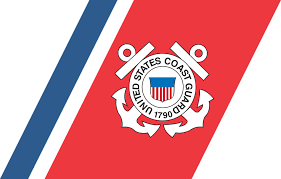Vessel Agents are no longer required to submit Ports of Call lists to CBP unless CBP requests this information. See the below and attached Southern Currents notice for more information and complete guidance.
Subject: Fifth Revision of Southern Currents 12-013
Southern Currents 19_025 Submission of Ports of Call List for AGM Vessels.pdf
Submission of Vessel “Ports of Call” Lists to CBP Prior to Arrival for Agriculture Targeting, and Procedures for Asian Gypsy Month [AGM] Targeted Vessels
Purpose:
The purpose of this notice is to inform vessel agents of the discontinuance of the “Ports of Call List” submission requirement.
Background:
The Department of Homeland Security, US Customs and Border Protection (CBP) and the Department of Agriculture, Animal and Plant Health Inspection Service (APHIS) have coordinated efforts to prevent the introduction of harmful insect pests into the United States. One such pest is AGM, an extremely invasive species of moth that has not been introduced into the United States, and is not currently present in North America. This pest is destructive to the ecology, may feed on over 600 plant species, and can seriously affect U.S. agriculture and forest resources. An AGM infestation could result in the defoliation of environmentally important species. Dense populations of AGM could cause economic and environmental damage. AGM is presently known and well established in Northern China (including all ports north of 31° 15′ N latitude; north of Shanghai), Japan, South Korea, and Far East Russia. The female AGM deposits egg masses during the high risk flight season between June and September, and these egg masses are the most likely life stage to be found on vessels which have visited or transited high risk ports during the AGM high risk flight season.
An AGM find on a vessel may require that the vessel be:
- Ordered into international waters
- Required to undergo treatment
- Re-inspected
- Refused entry
Procedures:
Previously, the vessel master, agent, owner, operator or designee, was required to fax or e-mail a copy of the vessel’s “Ports of Call” list to CBP prior to the arrival of a vessel from foreign or coastwise in the New Orleans Tri-Port. Ports of Call lists are no longer required to be submitted unless CBP requests this information.
AGM targeted vessels transiting directly to Baton Rouge will be restricted to one of the lower anchorages which will be determined by CBP. CBP will notify the vessel agent of all AGM related restrictions and will conduct the AGM inspections at the designated anchorage during daylight hours.
Suspect AGM Egg Mass Discoveries by Vessel Crew:
If a suspect AGM egg mass is discovered onboard a vessel before arrival at the Port of New Orleans, the vessel agent/representative should:
- Inform the captain to have a crewmember carefully scrape off the suspect AGM egg mass with a knife or paint scrapper and place the egg mass in a Ziploc bag. Do not add alcohol.
- Have the crewmember immediately place the specimen in a refrigerator. Do not freeze.
- Notify the CBP Operations Desk at (504) 670-2270.
A CBP boarding team will be dispatched to the vessel to conduct an AGM inspection. If the Agriculture Specialist determines that the specimen is suspect for AGM, normal AGM protocols will be followed. Once the AGM inspection is complete, the Agriculture Specialist will collect the specimen and submit it to the local USDA PPQ identifier for laboratory analysis.
Note: If the suspect AGM infested vessel is diverted to a foreign port before entering the Port of New Orleans, the CBP Operations Desk must be notified and the vessel crew should place the suspect egg mass in alcohol and/or incinerate the specimen. Never throw a suspect AGM specimen overboard.
Effective Date:
The procedures contained in this notice are effective upon receipt. Please contact Supervisory CBP Agriculture Specialist Kendall P. Gaines at Kendall.Gaines@cbp.dhs.gov or (504) 670-2055 with questions or concerns.

